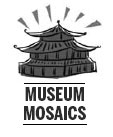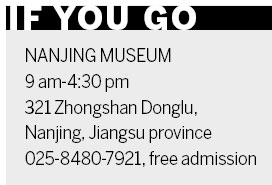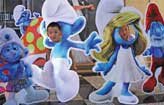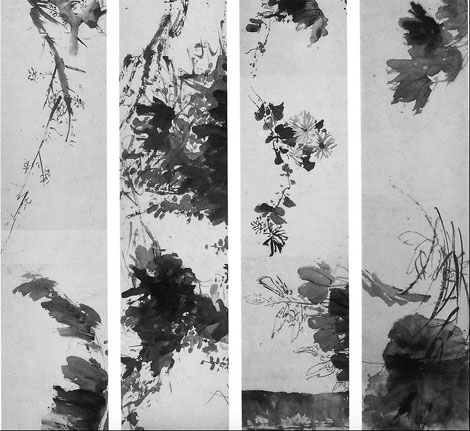People
The genius of madness
Updated: 2011-08-14 07:49
By Zhang Kun (China Daily)
|
Za Hua Tu Juan (Floral Sprays Scroll). ink painting by Xu Wei (Ming Dynasty) |
There is a fine line between inspired creativity and insanity. Both push the boundaries of normal thought. Zhang Kun has the tale.
Xu Wei was mad. Just like the Dutch artist Vincent van Gogh, it was this insanity that made him one of the greatest artists in Chinese history.
This was how Lu Li describes the artist. Lu is from the National Antique Appraisal Committee and he was narrating the story behind the most treasured scroll painting in the Nanjing Museum, the Za Hua Tu Juan (杂花图卷), the Floral Sprays Scroll by Ming Dynasty (1368-1644) artist, Xu Wei (徐渭), who lived from 1521 to 1593.
 |
The scroll unfurls to a full length of more than 1 meter, on which Xu painted 13 varieties of flowers, vegetables and fruits, including peony, pomegranate, lotus blossom and wisteria. It is the total abandon of his brush strokes that catches the eye.
"Look at the way he drew the vines of the wisteria - the strokes are totally wild, far beyond normal reckoning," Lu says.
Xu Wei was also known as Xu Wenchang, and his sobriquet was "Green Vine" or qingteng (青藤) awarded for the mastery of the way he captured the vines on paper.
He was the acknowledged master of freehand Chinese paintings of flowers and birds, and his style influenced many later artists who all tried to imitate his unfettered style.
But the genius came from a complicated background, which in part affected his later development, and also his life. Xu was born to a concubine but raised by his father's official wife. His father passed away when he was just a baby, and his adopted mother also died when he was a teenager.
"By his early twenties, he was already showing symptoms of mental disorder," Lu says. The art expert was especially interested in insanity and its influence on art, as his father was an acclaimed psychiatrist.
It was said that Xu had attempted to hit his own head with an ax, and stabbed his ear with an awl. When he failed to pass the imperial examination, Xu made repeated suicide attempts. Later, when he was about 40, he suspected his wife was having an affair, and he killed her. In prison until he was in his 50s, Xu was finally released with the help of those who admired his talents.
"People who are mentally imbalanced see the world through different perspectives and these mad artists present their experiences through their paint brushes," Lu says.
Like Van Gogh, Xu Wei was unlike any artist of his day, or even later.
A very graphic saying in Chinese goes like this: xiongyou chengzhu (胸有成竹) which translates roughly to mean that the artist has already visualized how a clump of bamboo should be drawn on paper.
"But not Xu Wei," Lu says. "He painted totally by instinct."
 |
His strokes went so rapidly on the rice paper that no other artists could imitate him, although many have tried. For example, an outstanding artist of recent times, Zhang Daqian (张大千) (1899-1983), tried to emulate Xu's style. He bought antique rice paper from the Ming Dynasty, and added glue to the pigments, just as Xu did. He accurately reproduced every stroke, but it was still easy to detect the imitation.
"The antique rice paper cost a lot, and Zhang was aware of how much money would be wasted if he made mistakes. With that consideration in mind, there was no way he could paint with the wild abandon that was Xu's style," Lu says.
Xu's spirit influenced and inspired many subsequent painters, such as Zhu Da (朱耷), also known as Bada Shanren (八大山人) (1626-1705), the Eight Eccentrics of Yangzhou (扬州八怪) in the 16-17th century; and modern masters including Wu Changshuo (吴昌硕) (1844-1927) and Qi Baishi (齐白石) (1864-1957).
Qi once declared his admiration for Xu in a poem that said: "How I wish I'd been born 300 years earlier so I could grind ink and prepare paper for the Green Vine".
Xu's masterpiece Za Hua Tu Juan was acquired by the Nanjing Museum in the 1960s through the help of Xie Zhiliu (谢稚柳), (1910-1997) an artist and acclaimed Chinese art critic.
"Even four hundred years later, you can still feel the fluid flow of ink on paper. There is music in it, like a symphony you cannot forget," Lu says.
You can contact the writer at zhangkun@chinadaily.com.cn

Specials

Star journalist leaves legacy
Li Xing, China Daily's assistant editor-in-chief and veteran columnist, died of a cerebral hemorrhage on Aug 7 in Washington DC, US.

Robots seen as employer-friendly
Robots are not new to industrial manufacturing. They have been in use since the 1960s.

Smurfs up in China
The movie remake of a classic 1980s cartoon series is expected to have special cross-generation appeal to Chinese filmgoers
